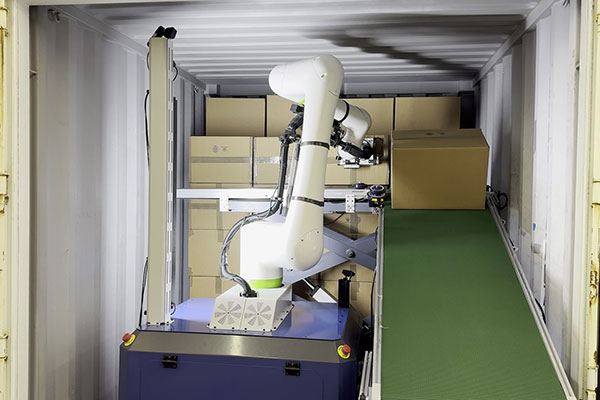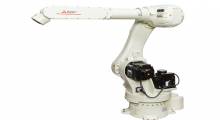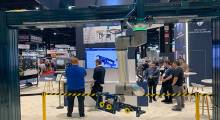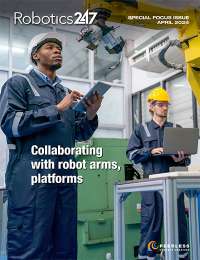Anyware Robotics recently announced a major add-on for its Pixmo robotic offering for truck and container unloading. The patent-pending add-on includes a vertical lift with a conveyor belt that is attached to Pixmo between the robot and the boxes to be unloaded.
The integrated Pixmo software quickly processes the various heights of the boxes in the container and then controls the conveyor of the add-on to move up and down to these positions to “meet” the robot arm as it unloads. The add-on, according to Anyware Robotics, enhances unloading efficiency, weight capability and reliability at marginal additional cost.
Pixmo arm expands unloading throughput
Every year an estimated 28 million containers enter the US with contents - usually boxes - that need to be unloaded. The Pixmo mobile robots autonomously unload boxes in containers and trucks more safely, cost-effectively, reliably and quickly than humans can, without the related injuries.
With the new add-on, the Pixmo robot arm no longer has to “rotate and place” to a conveyor. Now, the arm can “pull” to a conveyor, minimizing the distance the robot arm needs to travel to unload each box. Anyware Robotics says the change in motion doubles the throughput of Pixmo to up to 1,000 boxes per hour, and the support of the conveyor increases the weight capacity of the solution to 65 pounds.
The new Pixmo robot, as well as a prototype of the new add-on, will be on display at the Anyware Robotics booth at MODEX 2024.
“We are excited to showcase our Pixmo robotic solution and the innovative patent-pending add-on for unloading at MODEX,” said Thomas Tang, CEO and co-founder of Anyware Robotics. “The versatile Pixmo can easily connect to, power, and enable add-ons for different applications. This is all part of our plan to help it deliver increasing capabilities for different warehouse applications in the future.”
Pixmo can fit in many logistics operations
Pixmo robots can be used for unloading at transload facilities, cross docks, 3PL providers, distribution centers and e-commerce fulfillment warehouses. The robots can be installed within days and provide enhanced operational efficiencies and predictability.
Pixmo combines an autonomous mobile robot (AMR) base, a cobot arm with six degrees of freedom, vacuum-powered end effector designed for case handling and AI-powered perception and motion planning systems. It does not require costly software integrations or infrastructure changes to be deployed into the warehouse environment.
With its mobile base that has the footprint of a warehouse pallet, the Pixmo robot can move in any direction to create the best handling pose for the robot arm, both inside and outside the container. Pixmo is built on an advanced AI software stack that combines perception algorithms, learning-based motion planning and a data generation pipeline for AI training.
The commercial version of Pixmo is scheduled to be available in the summer of 2024. It will be available via direct purchase or RaaS (robots-as-a-service) models enabling companies that use Pixmo to scale as their business grows. The add-on is scheduled to be available in Q3 of 2024.
Want to learn more about cobot arms? This article was featured in the April 2024 Robotics 24/7 Special Focus Issue titled “Collaborating with robot arms, platforms.”
Article topics
Email Sign Up


















